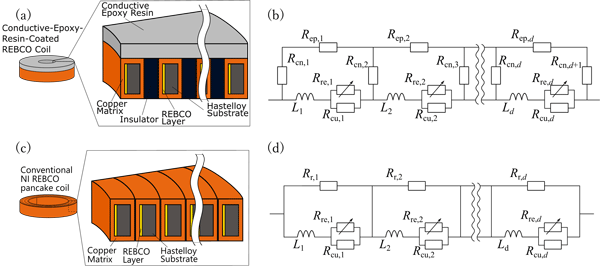AP6-2
Stability Analysis for REBCO Pancake Coils with Current Bypass to Escape from Local Normal Zone
Dec.2 13:30-13:50 (Tokyo Time)
Hokkaido University, Japan1
No-Insulation (NI) technique greatly enhances the thermal stability of Rare-Earth Barium Copper Oxide (REBCO) coils by bypassing the operating current from a local normal zone. A few current bypassing techniques have been proposed to apply to ultra-high field magnets; intra-layer no-insulation (LNI) and conductive epoxy resin coating (CERC) techniques [1]. These techniques also have the same function of current bypass escaping from a local normal zone as the conventional NI winding technique [2]. In the conventional NI REBCO pancake coils, the bypass current passes through the copper matrix of REBCO coated conductors. Meanwhile, in the LNI and CERC REBCO coils, it flows into conductive material attached on REBCO coated conductors, such as copper and conductive epoxy resin. Although these techniques have the current bypassing function, their structures are different each other.
Here, Fig. 1(a) shows the schematic view of CERC REBCO pancake coil [1]. Conductive epoxy resin is coated onto the top surface of the insulated REBCO pancake coils. Fig. 1(b) shows an equivalent circuit for the CERC REBCO pancake coils. It is different from that of the conventional NI REBCO pancake coils [Fig. 1 (d)]. Since these techniques have the different equivalent circuit, the different current behaviors will be observed. Therefore, we will systematically compare these characteristics of the high thermal stability techniques; NI and CERC.
Figure 1 (a)Schematic view of CERC REBCO pancake coil, (b) proposed equivalent circuit model of the CERC REBCO pancake coils, (c) schematic view of conventional NI REBCO pancake coil, and (d) equivalent circuit of conventional NI REBCO pancake coil.
Keywords: conductive-epoxy-resin-coated REBCO panc, magnet stability, no-insulation winding technique
